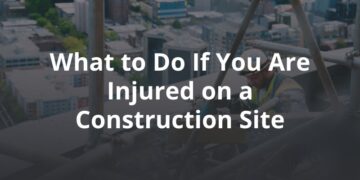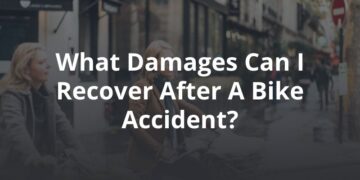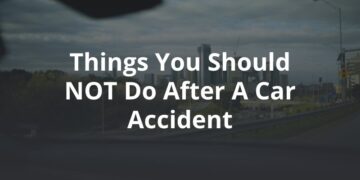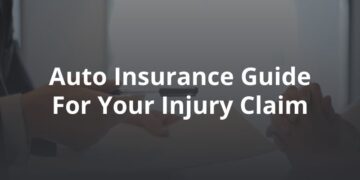Ask an Austinite which highway is their least favorite, and they’ll likely answer “I-35.” After all, it’s the one roadway in the city that always seems to be at least a little bit backed up, even hours after rush hour. Each day, hundreds of thousands of vehicles travel Austin’s section of I-35, causing serious congestion.
The problems with I-35 don’t end there, however; I-35 downtown is one of the most dangerous stretches of road in Austin, especially for those on foot. It’s the site of the most pedestrian fatalities in the city, and with our population growing by leaps and bounds, it’s likely only going to get worse.
That is, unless the city and the Texas Department of Transportation (TXDoT) make serious strides to address the issues with the highway. Although the two have made some moves to alleviate traffic, previous efforts have done little to help, indicating that more drastic measures may be needed.
That’s exactly what one Austin professor wants to do. His proposal, known as “cut and cap,” would take I-35 underground, burying the highway and converting the reclaimed land above into cycling and pedestrian paths. The idea could do a lot to fix the issues with I-35, especially in regard to pedestrian safety. But will it ever come to fruition? FVF decided to find out. Below, we take a look at I-35, what makes it so dangerous, and how the cut and cap proposal might help.
If you or a loved one has been involved in a traffic accident on I-35, it’s important to understand your legal rights and options. An experienced Austin car accident lawyer can help you navigate the complexities of your case, ensuring you receive the compensation you deserve. Contact FVF Law Firm – Injury & Wrongful Death Lawyers for a free consultation to discuss your situation.
Why Is I-35 So Problematic?
Previous solutions to relieve traffic on I-35 have had little impact on roadway congestion. In an effort to curb traffic, Austin officials invested in an alternative route, the tolled State Highway 130. The move did nothing to end the issues with I-35, however. Since the highway is situated so far east from the city’s main center, it is much less traveled. In a desperate measure to attract drivers to SH 130, the city raised the speed limit to an unprecedented 85 miles per hour, making it the fastest highway in the nation. And still, I-35 remains one of the most clogged roadways in Austin.
A study released in 2015, several years after the opening of SH 130, found that more than 220,000 vehicles travel the Austin stretch of I-35 every day, compared to a mere 40,000 on SH 130. Meanwhile, traffic on I-35 has been steadily ticking upward; research from the Texas A&M Transportation Institute indicated that the stretch of I-35 between 290N and Ben White Boulevard is the third most congested highway in Texas, causing over 10 million hours of traffic delays a year.
More cars on the road ultimately lead to more car accidents, especially on the downtown portion of I-35, where pedestrian crossings and bike paths intersect with I-35 frontage roads. In 2018 — the deadliest year for Austin pedestrian accidents in over 10 years — 11 pedestrians were killed on I-35 and its service roads, making this area the site of over one-third of all pedestrian fatalities last year.
In other words, it’s time for a new approach.
What Is “Cut and Cap?”
In 2013, in an effort to address the highway’s rampant safety issues, UT professor and architect Sinclair Black came up with an unusual solution: “cut” I-35 from Caesar Chavez Street to 12th Street and build lanes underground for traffic. Under Black’s plan, the underground portion would be “capped” with 30 acres of concrete, which he envisions as paved with narrow boulevards for local traffic, surrounded by safer bike lanes and sidewalks. In addition to protecting pedestrians and cyclists — as well as easing stop-and-start traffic on the highway — Black says his proposal would open up acres of land for urban development and reconnect the east and west sides of the city.
Black is not the only urban designer to present such a concept. In 2012, Dallas did the same thing with its Woodall Rodgers Freeway, installing a city park above the highway. That change has been a huge success; in 2016, the newly built Klyde Warren Park was nominated for best city park in America by USA Today’s 10 Best Readers’ Choice.
The Austin cut-and-cap idea gained traction when TXDoT proposed a similar plan, which would tunnel the through lanes of I-35 while keeping existing frontage roads as they are. After that initial push, however, the plan seemed to fizzle out — that is, until this year when it resurfaced. That was mainly due to a report from the Congress for New Urbanism, which featured the cut and cap initiative as an example of an innovative solution to a problem highway.
As of right now, it’s unclear how TXDoT, which owns the land in question, will proceed. The department did release an $8 billion plan to overhaul I-35, which included two buried lanes on the part of I-35 that passes by UT. However, the proposed changes put five lanes of traffic above that, which might ease congestion, but will do little to end deadly pedestrian accidents.
It will likely take more advocacy, and potentially more accidents before TXDoT takes serious action to protect pedestrians and cyclists traveling near I-35. The proposed changes to I-35 won’t be completed until 2027, which means that motorists, too, will be subject to increasingly heavy traffic — and dangerous road conditions, as a result — for many years to come.
However, that doesn’t mean that accident victims are out of options. If you have been injured on I-35 or anywhere else in the city, contact our automobile and pedestrian accident lawyers in Austin for more information on your legal rights. We offer a pressure-free complimentary case evaluation so you can decide how best to proceed with your accident case. We may not be able to change TXDoT’s policies, but our Austin personal injury lawyers can help accident victims like you obtain the compensation they need to recover.





